I have been sitting on this for years, but there is no progress, so I decided to make it public. I have changed some names for reasons of privacy and security.
In November 2008 I was contacted by intermediaries of the Kabuli Jewish community in New York. They asked me to find the Torah Scroll that had been missing from the Kabul Synagogue on Chicken Street since 1997. I had heard of this incident: at that time there were two Jews living there. They got in a dispute about the Torah, with one of them wanting to send it to Israel. The Taliban detained both of them and confiscated the scroll, as well as other valuables. The representatives of the Kabuli Jews asked me to help find the scroll.
They provided me with a copy of the receipt, signed by Mullah Muhammad Khairullah Khairkhwah, who was minister of the interior at the time and is now acting minister of information and culture in the Taliban interim government. The receipt stated that the “Torah Sharif” had been given to “Muhammad Agha” for transfer to the appropriate authorities. It also had a handwritten note asking the recipient to execute the order of the minister. Zebulun Simantov, the remaining Jew (the other died in 2005) had made a note on it in Judeo-Persian about the importance of the document.


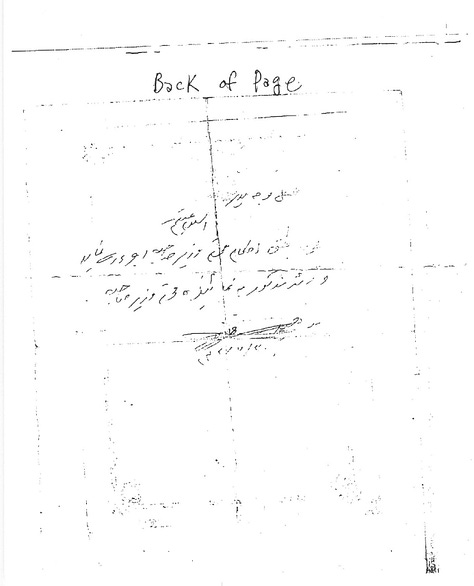
I showed this to several Taliban contacts and intermediaries. Mullah Wakil Ahmad Mutawakkil remembered the incident and thought that Khairkhwah had handed the scroll over to his deputy, Mullah Muhammad Khaksar, who was subsequently assassinated in Kandahar. Mullah Zaeef said that the scroll was part of the historical legacy of Afghanistan and should be preserved.
At that time Mullah Khaikhwah, who had been detained in Guantanamo, was pursuing a lawsuit in the U.S. judicial system. I managed to send him a message through his lawyer. The answer came back that Mullah Khaikhwah could not remember anything about it, which I guess is what I would have said if I were in Guantanamo.
Meanwhile, in 2011 President Karzai and the Afghan High Peace Council wrote to the U.S. ambassador, saying that they had reason to believe that Mullah Khairkhwah wanted to join the peace process and requesting his release. I arranged for the trustees of a Foundation run by Afghan Jews in New York to write a letter to the late Professor Rabbani, Chair of the High Peace Council, seeking his help in recovering the Torah. As far as I know the U.S. never responded to the request.
I did nothing further for several years, until, on February 10, 2015, I received an email from one of my sources of information on the Taliban, an Afghan businessman based in Dubai whom I will call Rafiq, wrote:
If my memory serves well, you had asked me if someone has heard of a Torah being held in Afghanistan. Today, a friend sent me these photos and I immediately thought of you. Please check the photos and if interested I can arrange the deal. There are 32 pages and a stone tablet.
There were four photographs. One showed a parchment leaf apparently from a disassembled Torah scroll containing three columns of Hebrew writing, consisting of the text of Deuteronomy 19:14 – 22:12.
The complete text of the Torah written in this manner normally requires 248 such columns. At three columns per sheet, there should be 83 sheets in a complete Torah scroll. Two of the pictures showed: the back of the parchment leaf, showing folds, and a suitcase containing several such sheets of parchment rolled up. The backs were exposed, so one could not see the writing. The fourth picture showed a stone tablet inscribed in Hebrew in the form of a mehrab.
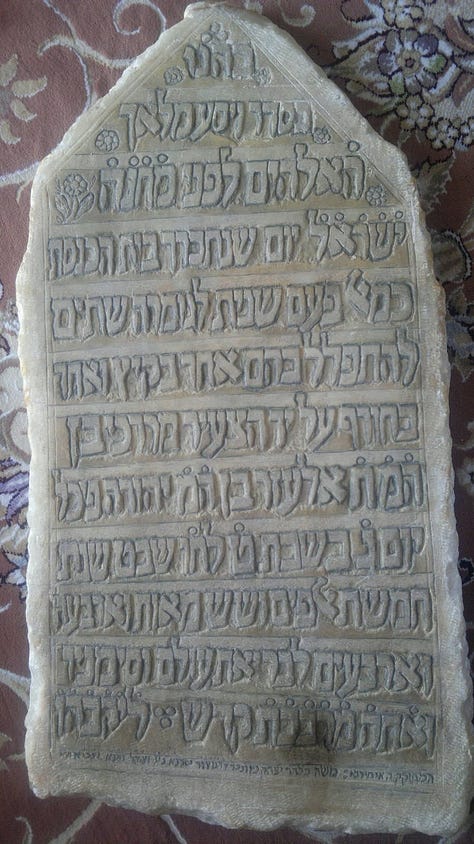
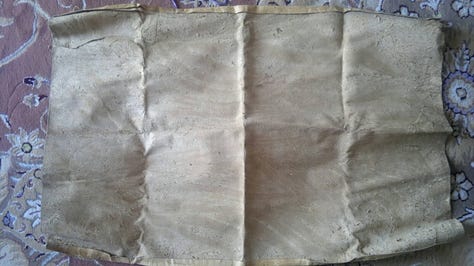
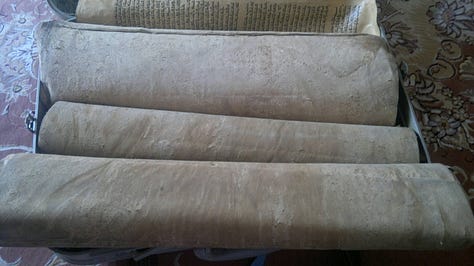
I spoke to Rafiq on the phone. He told me that the Afghans who had brought him these pictures said that the items were “somewhere between Afghanistan and Pakistan.” They were asking for $25 million for the Torah scroll and the stone tablet. Rafiq noted that this was of course ridiculous, but it was typical Afghan bargaining. The guys who had it seemed to think that the scroll had been handwritten by Moses when he received the Torah from the “Jewish God.”
I was able to partially translate the stone inscription. It commemorated the dedication of a synagogue on 9 Shevat 5644, i.e. 5 February 1884. Hence it was not very old by the standards of that region.
I went to see a gem dealer in the diamond district who is a leading elder of the Kabuli Jewish community in Queens. He said that the scroll could not be conclusively identified as coming from the Kabul synagogue except by the box in which it was kept. (While Ashkenazi Jews roll the scroll around two wooden spindles and cover with a velvet cover topped with a crown, Sephardic and Oriental Jews place the scroll in a box with two spindles, one at either end, unrolling the scroll inside the box.) He was offended by the $25 million demand. He said that the scroll had been damaged (disassembled, folded) and was therefore ineligible for ritual use (pasul). He said it was also not particularly old. He said he might be willing to pay “a couple thousand dollars” to get it back to bury it “out of respect,” which is how such scrolls are traditionally disposed of. He indicated more interest in the stone plaque and asked for information about its size and provenance. He said it was not from the Kabul synagogue, founded only in 1965, when Zahir Shah enacted a decree permitting Jews to own land.
I looked up on the Internet the value of antique Torah scrolls. The most expensive one, an Iranian scroll in perfect condition from about 1600 in the original case, was on sale for $52,000. Most were considerably less. I sent this information to Rafiq, as well as the date of the stone. He said that the guy who had the stuff claimed an Italian had offered them $2 million for both the scroll and tablet. He went back to Quetta but would be back in Dubai after February 21 or so.
In order to check the value of the scroll, I sent the photograph to Professor Mauro Perani of the University of Bologna, one of the world’s leading experts on Hebrew manuscripts. Perani had discovered the oldest known Torah scroll miscataloged in the library of the University of Bologna. Perani said that the scroll was not particularly old or valuable. He estimated its value at about 1000 euros – I am not sure if that was for the sheet of parchment or the whole Torah if available.
The gem merchant had said that the plaque might have been from a synagogue in Peshawar, so I began investigating synagogues in British India in 1884. It turned out that Baghdadi Jews dedicated synagogues that year in Calcutta and Bombay, but that has nothing to do with these stones.
I then contacted a professor in Jerusalem, an expert on South Asian Jewry. We managed to translate the inscription almost completely:
In the name of God we will do and succeed.
On [the week when we read the Torah portion] "And the angel of God [that was going] before the camp of Israel moved," (Exodus 14:19 -- also the Hebrew words "Camp of Israel” have dots over them meaning that they should be added up as gematria -- they add up to 644, which as we will see is the year), the day that the Kamal Synagogue was completely dedicated for the second time, two [halls?] to pray in them, one in the summer and one in the winter, by the humble Mordecai son of [honorific] Eleazar son of [honorific] Yehudah “Fikol” [meaning unknown -- a surname?], Tuesday 9 Shevat 5644 from the creation of the world [5 February 1884]). And its signs are “And you are a holy multitude” [the letters have dots over them and add up to 5644]. “Liqbahen” [unknown – the letter have dots over them and add up to 197, of unknown meaning].
On the bottom it is signed by the stone carver.
Searching on the Internet I found that there is a Kamal synagogue in the Iranian city of Yazd. I then found an expert on the history of Iranian Jewry, David Yeroushalmi of Tel Aviv University. I sent him the photograph and asked for his views. He wrote back:
Thank you so much for sharing with me the information and the photograph of the inscription belonging to Kamal Synagogue. According to the sources available to me, the inscription and the details contained in it belong beyond doubt to Kamal Synagogue of Yazd. Let me start with a short explanation about my main source of information regarding the Jewish community of Yazd in the course of the 18th-20th centuries. This is a Hebrew book, titled "Miyazd le-Eretz ha-Qodesh" (From Yazd to the Holy Land), compiled by Yosef Sheraga (originally Sharga), one of the active members of the Yazdi congregation in Jerusalem. In the book, which was published in Jerusalem in 1987, the author provides a rich body of information and authentic documents about the Jewish community of Yazd in the course of the 17th-20th centuries. Among other materials it gives the biographies and accounts of the major community figures and rabbis of Yazd in during the said period. In this part of the book (pp. 237-240), the biography and activities of Mordecai b. El'azar b. Yehuda are given in detail. Born in 1818 (d. 1905), Hajji (the honorific Jewish-Persian title for a person who made a pilgrimage to Jerusalem) Mordecai was one of the wealthy and generous benefactors of the community. According to the evidence provided by the elders of Yazd, and cited on page 237 of the above-mentioned book: " Hajji Mordecai was also the one who rebuilt the Kamal Synagogue after it had been ruined as a result of earthquake and damages caused by time. The [ Kamal] synagogue was one of first synagogues in the community and was originally named after one of the three Jews who had settled for the first time inside the city."
The specific information given by the elders of the community and the dates provided by them seem to confirm the date (1884) in which the Kamal Synagogue was dedicated anew by Hajji Mordecai.
There remains no doubt in my mind that the stone plaque belongs to Kamal Synagogue of Yazd. As to the word (or suname?) "Fikol" or its other variant readings, I am at loss.
Meanwhile Ahmed Rashid had invited me on very short notice to participate in Lahore Literature Festival, February 20-22. Steve Coll’s mother had died and Rashid needed a replacement. I accepted and arranged an itinerary that enabled me to spend Tuesday February 24 in the UAE. Rafiq told me that “the guys” would be back in Dubai that day and were willing to see me.
Rafiq invited me to breakfast with his contacts on the Palace Hotel Old Town in Dubai. When I entered the dining room, Rafiq got up to greet me. He took me aside and said that the person he was meeting with was a former deputy minister of the Taliban, whom I will call Mullah Qasim. Qasim is now estranged from the movement.
I explained to Qasim the true value and origin of the objects. I suggested that by handing them back to their rightful owners the Taliban could gain some international credibility and goodwill at a time that they were under strong pressure to negotiate with the Afghan government.
Qasim said that the items were not in the possession of the Taliban, with whom he was not affiliated any longer. They were being held by “northerners” of Massoud’s group who were keeping them somewhere in northern Afghanistan where there is a lot of snow. He had not met the important people who actually had the items but only their representatives or agents, whom he knew from Peshawar, where he has one of his residences.
According to Qasim, Khaikhwah had ordered the scroll sent to Mullah Umar. After examining it, Mullah Umar ordered that it should be preserved and kept in a safe place. Qasim did not know where that was. When the Taliban evacuated Kabul in November 2001, the scroll was left behind. It may have been looted along with many other items by the troops of the Northern Alliance (Shura-yi Nazar) who entered Kabul. They did not know exactly what they were. He said that they did have the box in which the Torah had been kept, which had some seals on it that might make it possible to identify the scroll. He had no idea how they might have a stone from a synagogue in Yazd.
I said that I was skeptical about the claim that Italians had offered $2 million for the items, as they were not worth that much financially. Jail explained that an Italian woman who claimed to be an employee of the Italian embassy in Kabul had shown interest. They had cut off a corner to show her what it was. She then offered them $1 million for all the items, but they did not follow up for fear that it was some kind of a trap.
Qasim had no idea how they might have gotten a stone from Yazd.
I explained that the items were not worth much financially and had no further religious function, but that the Kabuli Jews might want to bury the scrolls, as one buries an unusable copy of the Holy Quran. I noted that some American soldiers had unintentionally burned some copies of the Holy Quran, and I was sorry about that. Qasim said that Afghan Sunnis would never treat any religious object with disrespect and would preserve the items. Qasim offered to have a video made of all the pages, so that we could see if it was complete. He also said that they had the box and at least one of the spindles. He would photograph those, which contained some seals, as well.
I noted that I was likely to be back in the UAE in mid- to late-May, when I would be returning to Pakistan. Qasim said that by then he should be able to talk to the men who had the objects and have the video made.
Subsequently I contacted the official Jewish community of Iran through a contact button on their website. Eventually (July 12, 2015) I received the following reply:
با سلام به آقا/خانم:Barnett Rubin
جواب:You can use this email: iran@iranjewish.com The commemoration stone of Kamal Synagogue in Yazd, has been stolen about 10 years ago.
انجمن کلیمیان تهران
Iran Jewish Committee
On March 30 2016, I received a message from the Iran Jewish Committee, answering a query I had sent earlier. It said: shalom, Two sifrei Torah [Torah scrolls] were stolen from the kamal synagogue at the same time [as the stone].·
Subsequently, while on a trip to Europe, I met one of my contacts in Rome, who told me that some people claiming to be Afghan refugees had made contact trying to sell some objects. I received the following pictures:
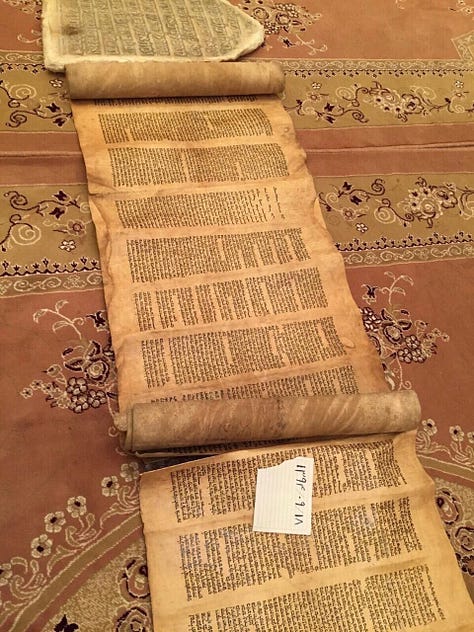
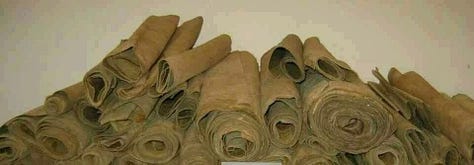
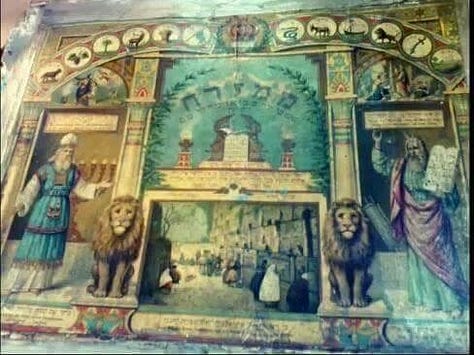
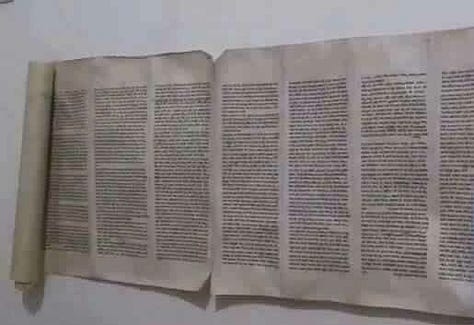
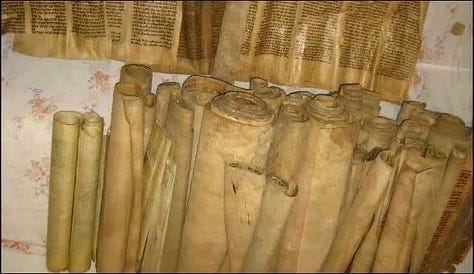

I have made no further progress. It does not seem likely that any of these photos depict the missing Torah scroll from the Kabul synagogue on Chicken Street. But they do seem to show that there are enough Jewish antiquities in Afghanistan to constitute a sector of the antiquities smuggling business. The Museum of the Bible In Washington D.C. recently opened an exhibit called Sacred Words, which displays the oldest known bound book (codex) in Hebrew, which they call the Afghan Liturgical Quire. This volume from the eighth century C.E. was found in the late 1990s by mujahidin of Hezb-e Wahdat in a cave in Bamiyan not far from the Buddha statues
that were later destroyed by the Taliban. All of which goes to show that Afghanistan is a repository not only of Zoroastrian, Buddhist, and Islamic antiquities, but also of Jewish ones. Any clues for further investigation are welcome.




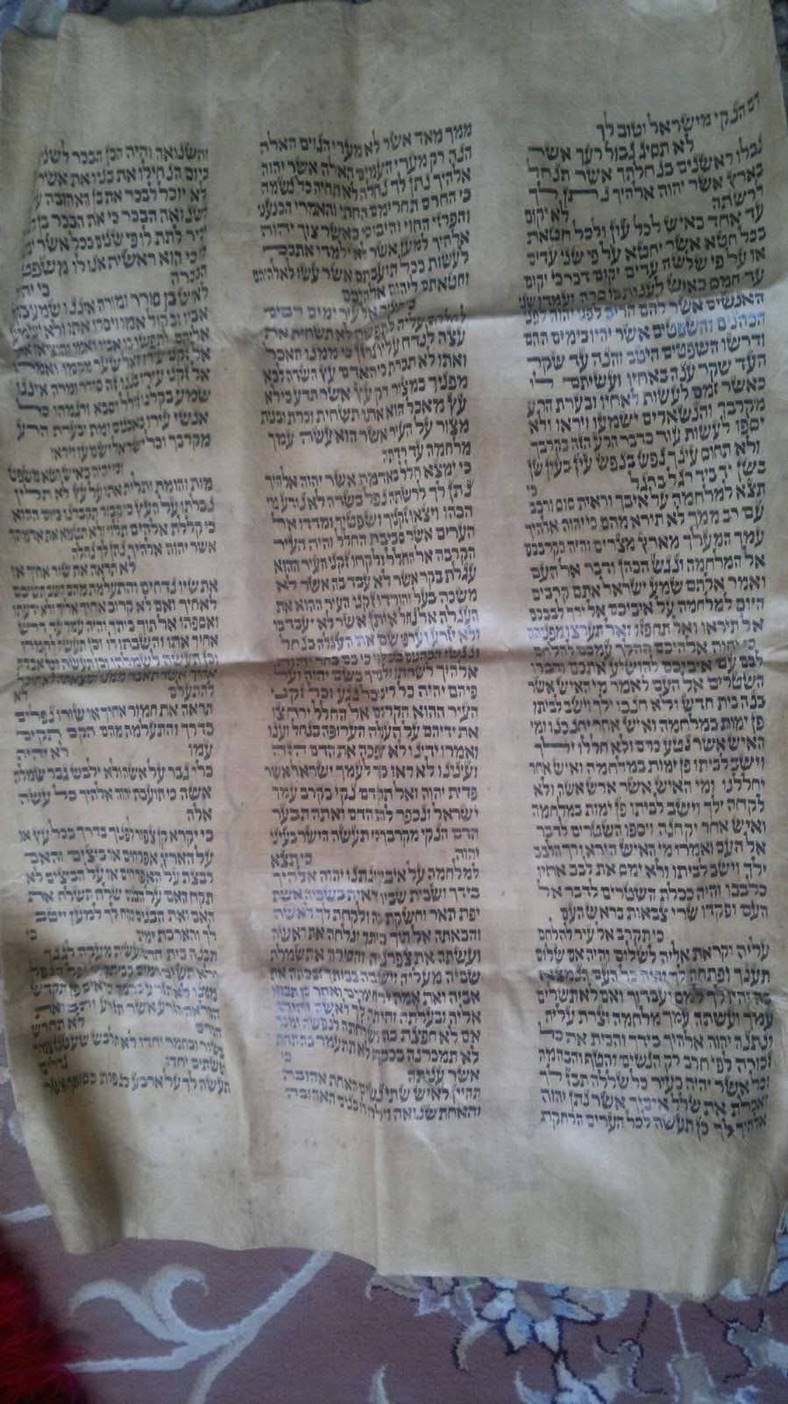

See the following 2023 claim of Torah Scrolls of Yahya-e-Jalali Synagogue Afghanistan
https://www.saigatours.com/article/the-last-synagogues-in-afghanistan
Hi Barney, thanks for sharing this. You are probably aware that there was a Jewish cemetery (a cemetery where several headstones bear Hebrew inscriptions) close to Jam minaret. I visited it in 2000, but have not heard about it since then. This supports your suggestion that Afghanistan is also a repository of historical information on the Jewish people